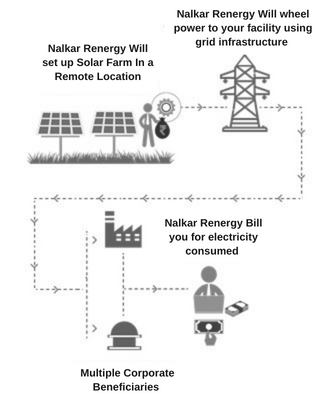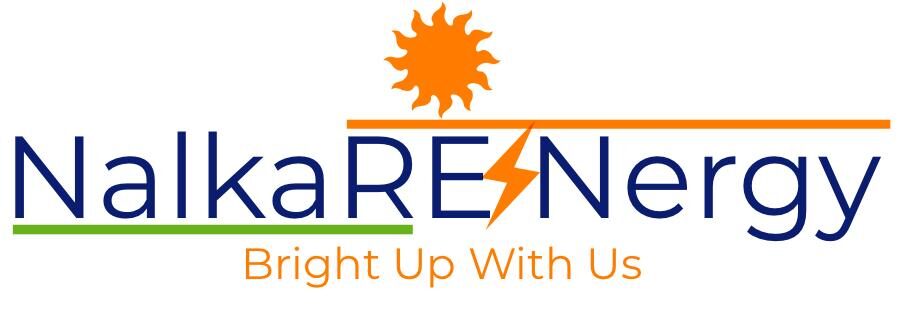Solar farm in India
Most corporates today strive to source as much of their power as possible from renewable energy sources, particularly because of global commitments like RE100 gaining traction. While rooftop or distributed solar is a great way to get started, many of our clients don’t have sufficient space within their facilities to install a power plant to supply the bulk of their energy requirements.
Grid-connected or ‘Open Access’ solar power through offsite Solar Farms addresses this problem by providing large-scale power through the grid, up to 100% of our clients’ needs.
For a business, sourcing of renewable energy achieves the dual goals of substantial savings on electricity as well as making large strides towards 100% sourcing of renewable power. Open access solar power is a popular power generation option that gives enterprises like yours an opportunity to meet all your electricity needs at tariffs lower than the prevailing grid electricity rates along with the tariff certainty for next 20-25 years.


* Example:
Below graph showcases the benefit of procuring power from offsite open access solar farms in India. The Solar power is supplied considering the Time of Year (TOY) and with banking restrictions prevailing in India.
Let’s assume that this large corporate has a need for a continuous and constant power load of 100 units throughout the year 24×7.
Then power procurement through an open access solar farm alone can cater to only 60 units i.e. for every 100 units of electricity required only 60% of the power requirement can be substituted by solar energy without the risk of incurring significant banking losses and also customer can achieve around minimum 25% savings on their annual electricity bills.


*Disclaimer: The information presented above is for educational purposes only. All the data provided in the article above are approximate values derived from third party sources, research articles or on ground experience and Nalkar Renergy would take no responsibility or have any obligation over the correctness of data.
Today we have a large network of private offsite open access renewable energy farms across India, through which we supply large corporates clean energy as per their requirements.
You can choose to procure low cost renewable energy using any of the below models.
Frequently Asked Questions
A typical rooftop solar power plant may not be able to meet the substantial power demands of corporates due to space constraints. This is where utility-scale grid connected Open Access plants come in, which enable greater renewable power generation
Typically, two procurement models are used: third-party PPAs and captive or group captive models
Open access charges under a utility-scale renewable project vary with location and procurement models. Various charges under the Open Access mechanism include the following:
- Transmission charges
- Wheeling Charges
- Transmission losses
- Wheeling losses
- Cross-subsidy surcharge (CSS)
- Additional surcharge (AS)
- Banking charges
- Due diligence based on company locations
- Understanding Open Access Risks
- Due Diligence on the developer
- PPA Negotiations
Contractual Challenges:
- Tenor mismatch between PPA & loan
- Contract enforcement
- Contract standardization
Operational Challenges:
- Grid curtailment risk
- Performance risk
Regulatory Challenges:
- Uncertainty around Open Access regulations and charges
- Inconsistency in eligibility and operating criteria for Open Access
- Exclusion from Open Access
- The utilities point of view
- Paper-based approval process
